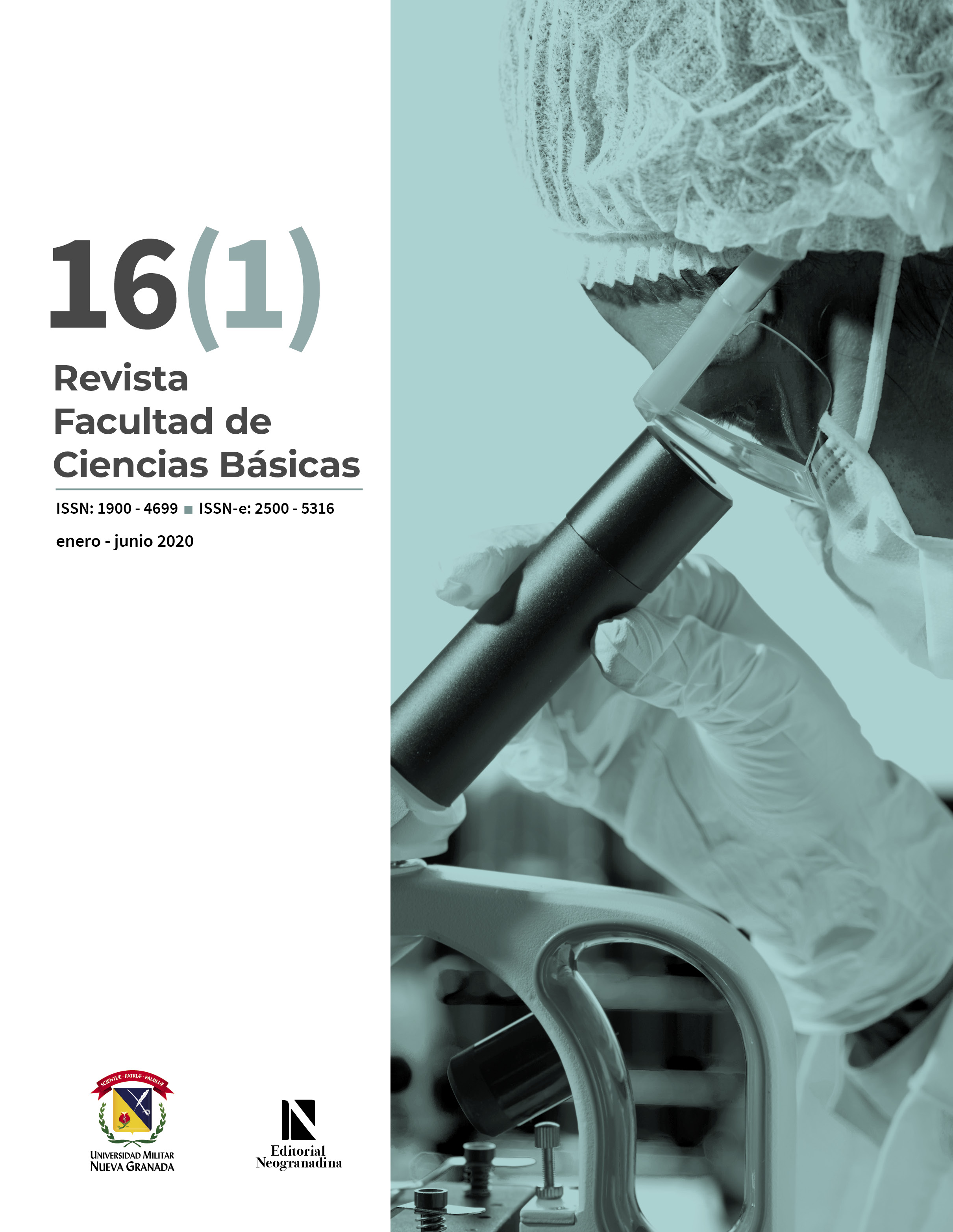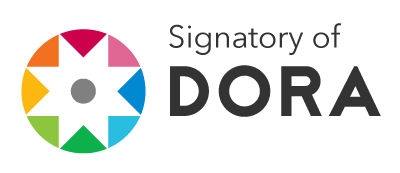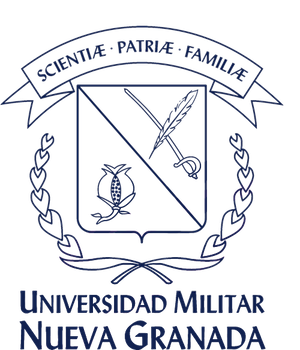Effect of the coplanarity between camera and leaf for the determination of leaf area in Eichhornia crassipes with digital images
Abstract
The non-destructive methodologies used to determine leaf area through photographic captures and subsequent processing have had an important reception in various disciplines. However, there are few studies that validate the effect of the coplanarity or non-coplanarity between the camera planes and the leaves in terms of precision and accuracy. In this study, the precision of the leaf area values obtained in the Eichhornia crassipes plant was evaluated, using two non-destructive methodologies with image processing in Image J software. Subsequently, the accuracy is evaluated in the non-destructive methodology showing less variability in the results. Method 1 does not present a rigorous control between planes, while methodology 2 uses a device to guarantee coplanarity. As references, an image processing system and printed elliptical figures of known area built with AutoCAD software were used. The results show with a confidence level of 95% the same level of precision between the reference image processing system and methodology 2, which turned out to be the most accurate. Regarding the accuracy, evaluated through the confidence limits for the slope and intercept of curve calibration parameters, a statistically similar behavior was obtained between method 2 and the AutoCAD software, and the same differences between methodology/referents and referent/referrer.
Downloads
References
S. Castillo, M. Zaragoza, J. Alvarado, G. Barrera y N. Dasgupta-Schubert. (2014). "Using the conservative nature of fresh leaf surface density to measure foliar area", Int Agrophys. [Internet]. Vol. 28, n.o 4, pp. 413-421. https://doi.org/10.2478/intag-2014-0032
Z. Lu et al. (2016). "Differences on photosynthetic limitations between leaf margins and leaf centers under potassium deficiency for Brassica napus L". Sci Rep. [Internet]. Nol. 6, n.o 21725. https://doi.org/10.1038/srep21725
W. Ocheltree, B. Nippert y V. Prasad. (2016). "A safety vs efficiency trade-off identified in the hydraulic pathway of grass leaves is decoupled from photosynthesis, stomatal conductance and precipitation", New Phytol. [Internet]. Vol. 210, n.o 1, pp. 97-107. https://doi.org/10.1111/nph.13781
S. Ranjit, P. Manish y S. Penna. (2016). "Early osmotic, antioxidant, ionic, and redox responses to salinity in leaves and roots of Indian mustard (Brassica juncea L.)", Protoplasma. [Internet]. Vol. 253, n.o 1, pp. 101-110. https://doi.org/10.1007/s00709-015-0792-7
Y. Wu et al. (2016). "Responses to shade and subsequent recovery of soya bean in maize-soya bean relay strip intercropping", Plant Prod Sci. [Internet]. Vol.19, n.o 2, pp.1-9, 2016. https://doi.org/10.1080/1343943X.2015.1128095
F. Sala, G. Arsene, O. Iordănescu y M. Boldea. (2015). "Leaf area constant model in optimizing foliar area measurement in plants: A case study in apple tree", Sci Hortic. [Internet]. Vol. 193, pp. 218-224. https://doi.org/10.1016/j.scienta.2015.07.008
S. Sullivan, J. Petersen, L. Blackwood, M. Papanatsiou y J. Christie (2016). "Functional characterization of Ostreococcus tauri phototropin", New Phytol. [Internet]. Vol. 209, n.o 2, pp. 612-623. https://doi.org/10.1111/nph.13640
K. Tondjo et al. (2015). "Non-destructive measurement of leaf area and dry biomass in Tectona grandis", Trees. [Internet]. Vol. 29, pp. 1625-1631. https://doi.org/10.1007/s00468-015-1227-y
S. Weraduwage et al. (2015). "The relationship between leaf area growth and biomass accumulation in Arabidopsis thaliana", Front Plant Sci. [Internet]. Vol. 6, n.o 167. https://doi.org/10.3389/fpls.2015.00167
C. Schneider, W. Rasband y K. Eliceiri. (2012). "NIH Image to ImageJ: 25 years of image analysis", Nat Methods. [Internet]. Vol. 9, pp. 671-675. https://doi.org/10.1038/nmeth.2089
A. Covarrubias y J. Peña. (2017). "Contaminación ambiental por metales pesados en México: problemática y estrategias de fitorremediación", Rev Int Contam Amb. [Internet]. Vol. 33, pp. 7-21. https://doi.org/10.20937/RICA.2017.33.esp01.01
V. Guna, M. Ilangovan, A. Prasad y N. Reddy. (2017). "Water Hyacinth: a unique source for sustainable materials and products", ACS Sustain Chem Eng. [Internet]. Vol. 5, n.o 6, pp. 4478-4490. https://doi.org/10.1021/acssuschemeng.7b00051
K. Mishra y D. Tripathi. (2008). "Concurrent removal and accumulation of heavy metals by the three aquatic macrophytes", Bioresour Technol. [Internet]. Vol. 99, n.o 15, pp. 7091-7097. https://doi.org/10.1016/j.biortech.2008.01.002
V. Pandey. (2016). "Phytoremediation efficiency of Eichhornia crassipes in fly ash pond", Int J Phytoremediation. [Internet]. Vol. 18, n.o 5, pp. 450-452, 2016. https://doi.org/10.1080/15226514.2015.1109605
N. Singh, A. Raghubanshi, A. Upadhyay y U. Rai. (2016). "Arsenic and other heavy metal accumulation in plants and algae growing naturally in contaminated area of West Bengal, India", Ecotoxicol Environ Saf. [Internet]. Vol. 30, pp. 224-33. https://doi.org/10.1016/j.ecoenv.2016.04.024
S. Tiwari, S. Dixit y N. Verma. (2007). "An effective means of biofiltration of heavy metal contaminated water bodies using aquatic weed Eichhornia crassipes", Environ Monit Assess. [Internet]. Vol. 129, pp. 253-256. https://doi.org/10.1007/s10661-006-9358-7
S. Li. (2014). "Design and strength analysis methods of the trochoidal gear reducers", Mech Mach Theory. [Internet]. Vol. 81, pp. 140-154. https://doi.org/10.1016/j.cad.2014.06.013
D. Manrique, M. Al-Hussein, A. Bouferguene y R. Nasser. (2015). "Automated generation of shop drawings in residential construction", Autom in Const. [Internet]. Vol. 55, pp. 15-24. https://doi.org/10.1016/j.autcon.2015.03.004
Q. Qi, P. Scott, X. Jiang y W. Lu. (2014). "Design and implementation of an integrated surface texture information system for design, manufacture and measurement", Comput Aided Des. [Internet]. Vol. 57, pp. 41-53. https://doi.org/10.1016/j.mechmachtheory.2014.07.001
J. Yoon, H. Kwon, B. Kim y J. Lee. (2015). "Development of a service platform for sensitization of manufacturing-related activities to use 3D CAD data", Procedia CIRP. [Internet]. vol. 30, pp. 90-95. https://doi.org/10.1016/j.procir.2015.02.108
N. Miller y C. Miller, Estadística y quimiometría para química analítica, Madrid: Pearson Educación S.A., 2002.
C. Sauceda-Acosta et al. (2017). "Macf-Ij, método automatizado para medir color y área foliar mediante imágenes digitales", Agrociencia. [Internet]. Vol. 51, n.o 4, pp. 409-423. Disponible en: http://www.scielo.org.mx/pdf/agro/v51n4/1405-3195-agro-51-04-00409.pdf












